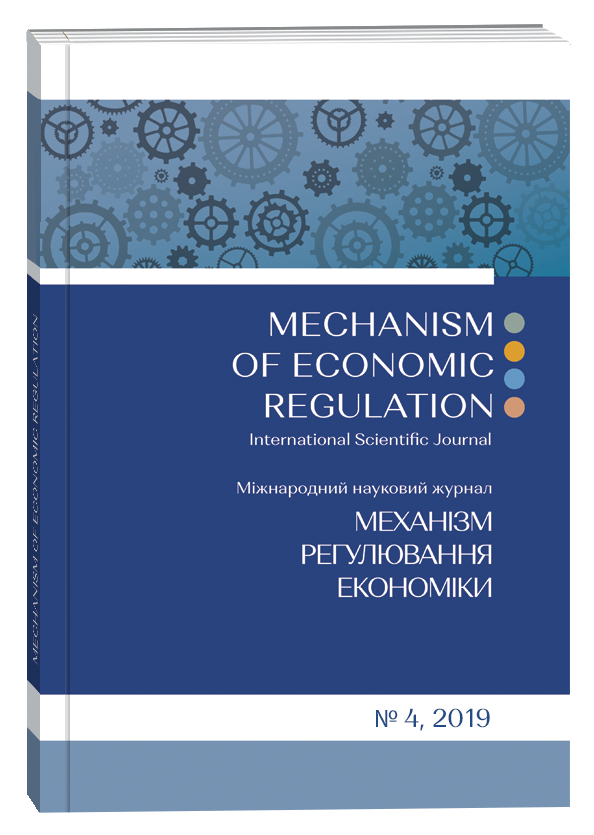TRANSFORMATION OF THE BANKING SECTOR IN THE DIGITAL ERA
Abstract
In the context of global digitization of the economy and development of alternatives to banking services, the transition to open platforms and their integration with the FinTech sector becomes relevant. The article identifies four levels of integration between banks and FinTech companies: traditional banking, digital banking, open banking and Open-X banking. At the current stage, the first three models coexist. Traditional banking includes classic banking services (loans, deposits, payments) for individuals and corporate clients, as well as investment banking. Digital banking involves the use of various channels of banking services for clients, among which the digital channel plays a significant role. The analysis of digital banking let to define its main features in terms of the financial services consumers and the bank. Open banking is based on the bank’s ability to engage non- banking intermediaries ecosystems and third parties to the banking service provision and to interact with them through such technologies as application programming interfaces (API). In the research of the оpen banking the main reasons for the cooperation of FinTech companies with banks are considered. These include inhanced visibility by partnership with an established brand, achieving economies of scale, etc. The highest level of integration of banks and FinTech companies and the future development trend of the banking sector is Open-X banking. The main features of Open-X banking include: sharing rather than sole ownership; information is a primary resource instead of tangible assets; partnerships between market actors are formed instead of developing the product independently or purchasing ready-made software solutions; focus on providing a positive customer experience from working with the bank instead of offering a specific product.
References
Capgemini, and Efma (2016). World Retail Banking Report 2016. Retrieved from https://web.uniroma1.it/dip_management/sites/default/files/allegati/World%20Retail%20Banking%2 0Report%202016.pdf
Capgemini, and Efma (2019). World FinTech Report 2019. Retrieved from https://www.capgemini.com/eses/wpcontent/uploads/sites/16/2019/06/World-FinTech-Report- WFTR-2019_Web.pdf
Capgemini, LinkedIn, and Efma (2018). World FinTech Report 2018. Retrieved from https://www.capgemini.com/wp-content/uploads/2018/02/world-fintech-report-wftr-2018.pdf
Cherowbrier, J. (2018). European banking sector. A statistical dossier on the current banking sector and meeting the demands of a digital future. Statista. Retrieved from https://senat.me/wp-content/uploads/study_id59063_european-banking-sector.pdf
Derkach, A. O., Kornyeyeva, M. V., Abakumenko, O. V. (2016). Didzhytalizatsiya bankivsʹkoho sektoru Ukrayiny [Digitization of the banking sector of Ukraine]. Finansovi doslidzhennya, 1, 69-75. Retrieved from http://nbuv.gov.ua/UJRN/find_2016_1_10
Deutsche Bank (2015). FinTech 2.0: Creating new opportunities through strategic alliance. Retrieved from http://cib.db.com/docs_new/GTB_FinTech_Whitepaper_(DB012)_A4_DIGITAL.PDF
Pousttchi, K., Dehnert, M. (2018). Exploring the digitalization impact on consumer decision making in retail banking. Electronic Markets, 28(3). Retrieved from https://doi.org/10.1007/s12525-017- 0283-0.
Walker, A. (2014). Banking without banks: Exploring the disruptive effects of converging technologies that will shape the future of banking. Journal of Securities Operations & Custody, 7(1), 69-80.
Zherdetsʹka, L. V., Horodynsʹkyy, D. I. (2017). Rozvytok finansovykh tekhnolohiy: zahrozy ta mozhlyvosti dlya bankiv [Financial Technology Development: Threats and Opportunities for Banks]. Ekonomika i suspilʹstvo, 10, 583-588.


